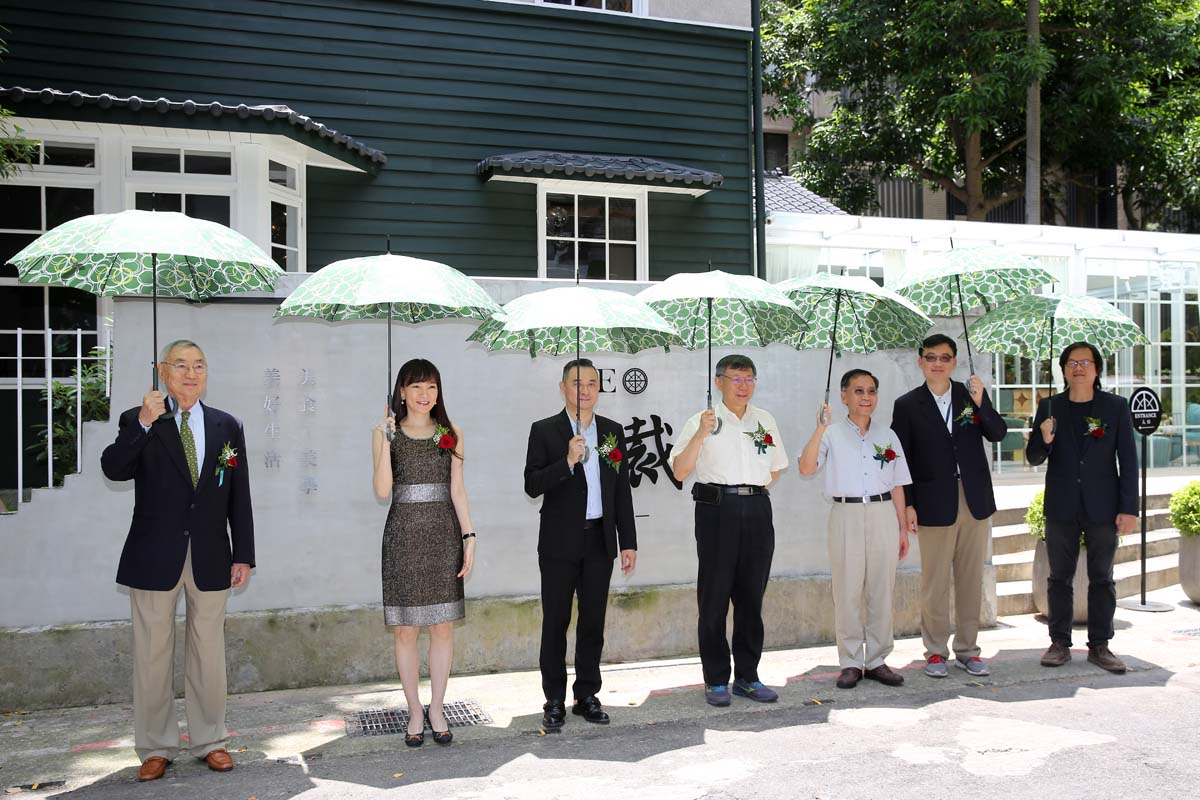Mayor Attends CEO1950 Opening Event
 On June 20, Mayor Ko Wen-je attended the opening ceremony of the CEO 1950 Art Space (Address: No. 24, Lane 62, Section 3, Xinshen N. Road). He described the renovated facility as another success of Taipei’s Old Building Culture Movement.
On June 20, Mayor Ko Wen-je attended the opening ceremony of the CEO 1950 Art Space (Address: No. 24, Lane 62, Section 3, Xinshen N. Road). He described the renovated facility as another success of Taipei’s Old Building Culture Movement.
The building which houses the CEO 1950 is a two-story wooden structure. After being purchased by the Central Bank in 1950, it was used as the company’s dormitory. Notable individuals such as the first director of the Central Bank P.Y. Shu and former Auditor General of the Control Yuan Chang Tao-min used to be occupants.
In January of 2019, imBrella Corporation acquired the operation rights to the building through the Old House Culture Movement Project. After investing roughly NT$20 million and 1 year of time, the site was overhauled and reopened its doors as CEO 1950 – a place for fine food and aesthetics.
According to the mayor, the Old House Culture Movement Project was first introduced in 2012. The project underwent revisions in 2017 to move away from the government-centric perspective, making it easier to pitch. He recalled that stories make buildings interesting and cited the Taj Mahal as an example where a love story injects a new life into the monument. Noting that CEO 1950 used to be the home for several financial heavyweights, this building harbors numerous stories related to Taiwan’s financial history.
Ko pointed out that Taipei boasts many unique urban attractions compared to other cities worldwide, such as the Beitou Hot Spring, Dadaocheng, Treasure Hill Artist Village, Longshan Temple, and more. Taipei is special because it is hard to imagine how a number of different “cultures” can coexist in one location. This is another reason why the city government seeks to implement the idea of a wall-less museum. The focus is neither on placing historical relics within the confines of a museum or the structure itself: the museum is defined by stories which are determined by the scope of history.

![Taiwan.gov.tw [ open a new window]](/images/egov.png)
